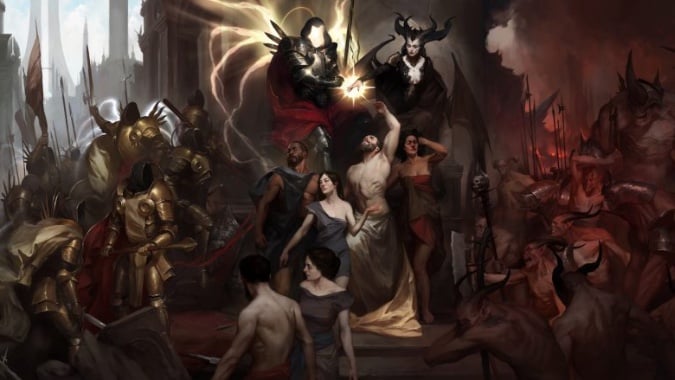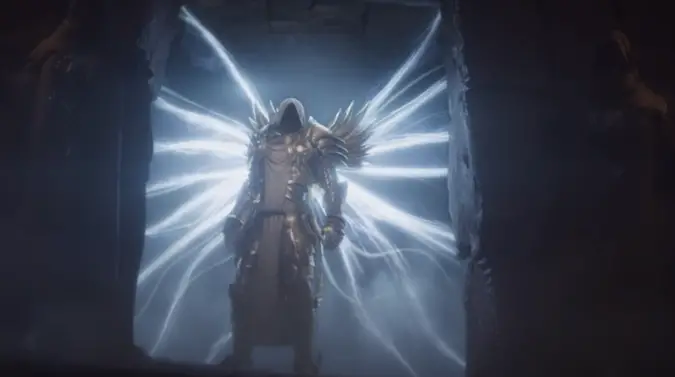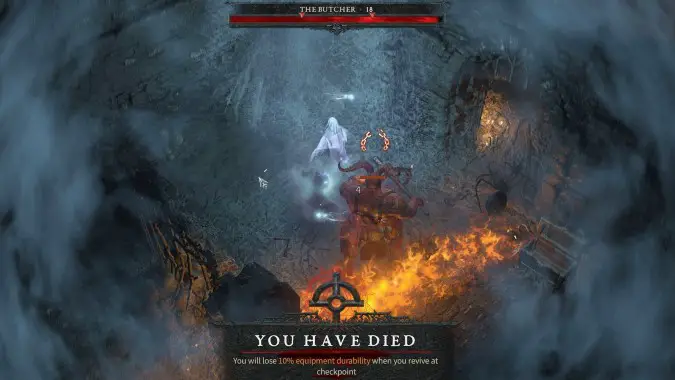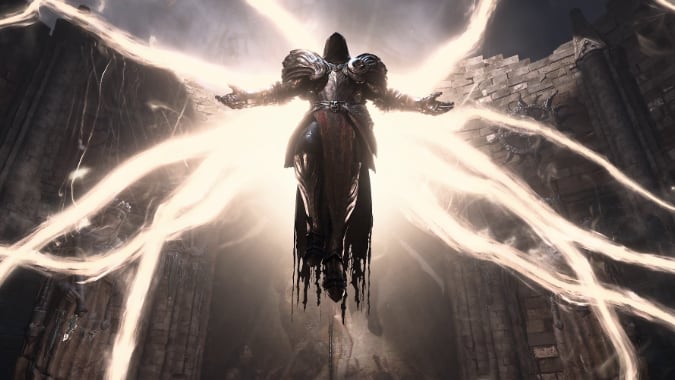What are the differences between Diablo 2 and Diablo 4?

While Diablo 4 is the game we’ve all been waiting for since its announcement at BlizzCon 2019, it’s fair to say that Diablo 2 is the game that truly put the Diablo franchise on the map. In terms of influence on the wider industry, it is by far the most important of the games in the series, and from the time of its initial release until the present day almost 23 years later, it has remained popular, beloved, and played by many. Diablo 2: Resurrected has only served to introduce the classic game to a generation who were potentially not even born yet when it was released.
As you might expect from two games released 23 years apart, Diablo 4 is not Diablo 2. It’s certainly inspired by its illustrious predecessor, but it also takes inspiration from other games — as well as wholly new features never before seen in the franchise.
So let’s go into a bit of detail on how these two games diverge from one another.

Each game has a skill system but there are notable differences
It’s true that in many ways the talent system for Diablo 4 owes a debt of inspiration to Diablo 2, but just comparing the skill calculator for D2 to the skills list from D4 reveals some vital differences. The fundamental difference is almost a philosophical one. In D2 you’re tied to one particular path. You have to invest points in your tree in order to unlock the better skills lower in the tree, and there are many skills dependent on investing points in skills further up the tree. For example, to buy Whirlwind, you not only need a rank in Leap and Leap Attack, you also need a rank in Bash, Stun, and Concentrate — so you need at least one rank in five other skills before you can buy the sixth and your character is significantly weaker until you do begin to cap them.
By contrast, in D4 you can hop around as much as you want, choosing skills however you want and in whichever order. The trees aren’t trees, as such — while it may make sense to focus on, say, the Rend nodes and really beef up your Bleeds, you can also invest a smattering of points in other damage types, or even the defensive abilities which seem the most appealing. In D4, as long as you’re investing points in general, you’ll unlock those later nodes.
D2 skills also have much higher caps than in D4 — 20 points to cap most skills in D2 versus 5 points max to cap a skill in D4, though several nodes have fewer. There are just fewer skills in D2, too. You could end up spending 60 points in a single tree and getting only three abilities. I’m not saying you have to spend 20 points in, say, Leap in order to get Leap Attack, just that there are 20 ranks in each skill available. D2 skills tend to be pretty weak until you’ve spent at least 10 points in them, in order to keep players from just running down the talent trees putting one point in everything. This is a non-issue in Diablo 4.
Diablo 4 is a lot more flexible and has significantly more options for the player to explore.

Is combat the same?
In Diablo 2, winning a fight can be as easy as finding the right kind of gear and picking the right talents, but in Diablo 4 you’ll need to spend more time learning what the various demons and other monsters of Sanctuary do in a fight. Combat as a whole is a lot more fluid in Diablo 4. You’ll need to keep track of your various cooldowns and learn what works and what doesn’t.
Systems like the Druid’s transition from ranged caster to melee brawler via the ability to cast damaging spells and then leap into the fray as a werewolf are a big contrast to D2 and the way the Druid in that game was a specialized character — they could summon forth powerful storms, or shapeshift into a bestial were-form. But Diablo 4 Druids are able to move between these options and the gameplay not only rewards that flexibility, it almost requires it.
This is not to say that D2 is bad, it’s just a more tactical experience than D4. It’s about putting together the right gear, the right spec, the right runes and so on as much as it is about learning how the fight works. Keeping in mind that at present I’ve only seen the first 25 levels of Diablo 4, it’s more of a game about learning how to apply the tools you have to each new situation. Less tactical, more strategic.

How do the stories differ?
It’s still a bit early to call the story differences, as we’ve barely gotten a small glimpse of Diablo 4‘s plot at this point. They do share the whole a bad thing is loose in our world and we have to stop it premise, but there’s a pretty big divide in how each game uses that structure. D2 is a very focused game, which wastes no time on anything extraneous to the core plot — indeed there are really very few ways to do anything but simply follow the rails of the game and go from point A to point B following the ultimate threat of the Dark Wanderer as he leaves Tristram.
D4, however, is an open world game with a lot more to do and explore in addition to following the main plot wholeheartedly. If you’re more a fan of the direct approach and less of getting out there and seeing what you can find, Diablo 2 might well be more your cup of tea, but if you’re looking for side quests galore, D4 will quench that thirst.
To sum it all up, there are clear and unmistakable similarities between Diablo 2 and Diablo 4, as one might well expect between two games in a franchise. But Diablo 4 tends to be more complex, has more variety, and often feels a bit more interested in giving the player more options through all parts of the game, while Diablo 2 is very intent on getting you from the start of the story to the end with as few stops along the way as it can manage.
Please consider supporting our Patreon!
Join the Discussion
Blizzard Watch is a safe space for all readers. By leaving comments on this site you agree to follow our commenting and community guidelines.
 @MatthewWRossi
@MatthewWRossi



